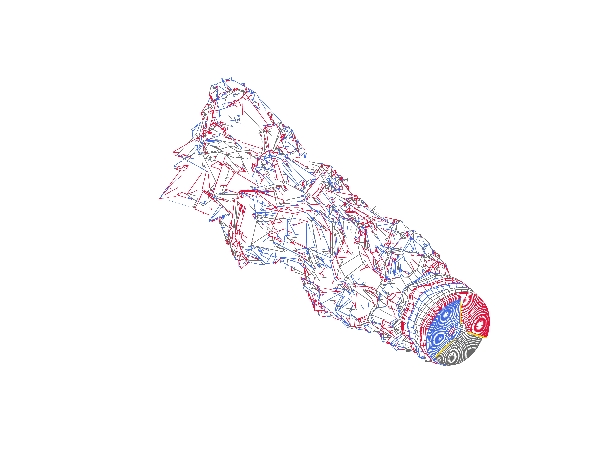 |
|
|
| PhD student: |
Hamidreza Abedi hamidreza.abedi@chalmers.se |
| Supervisor: |
Lars Davidson lada@chalmers.se |
| Co-supervisor: |
Spyros Voutsinas, National Technical University of Athens spyros@fluid.mech.ntua.gr |
| Sponsors: | Swedish Wind Power Technology Center (SWPTC) |
| Publications: | [1-7] |
| Start of project: | April 2011 |
| End of project: | April 2016 |
BACKGROUND Nowadays, wind turbine is considered as an important renewable energy device generating electricity. The aerodynamics of wind turbine is not fully matured and is a challenging topic. Different topics can be studied such as modeling of the induced velocity field generated by the vortical wake behind the turbine, unsteady aerodynamic related to the blade sections, dynamic stall and etc. The assumptions made in aerodynamic models affect the range of their application.
PROJECT The vortex method is another approach based on potential, inviscid and irrotational flow assumptions. This method is the focus of our project. Compared to the BEM method, the vortex method is able to provide more flow physics and is valid over a larger range of turbine operating conditions. The vortex method can be divided into the prescribed and free wake models. In the prescribed vortex method, the wake structure is set up based on a specific tip vortex geometry such as a helix. Hence, the range of its application is limited. In the free wake vortex method, the vortex elements are allowed to convect and deform freely based on the local and induced velocity field. It has fewer potential limitations compared to prescribed wake and makes it more suitable for design purposes. Although CFD method is more exact and precise than BEM and vortex methods, it is computationally too expensive for design purpose. The aim of the project is to develop computational methods for predicting unsteady aerodynamic loads on wind turbine rotor blades. The focus of the project is to handle transient loads by the vortex method. We will also combine the vortex method with CFD, where CFD is used to model the near-wake region.
REFERENCES
|
|
This page, Aerodynamic loads on wind turbines, should be part of a frames system at www.tfd.chalmers.se/~lada/projects/proind.html by Webmaster: Ingalena Ljungström ilj@flowsim.se |